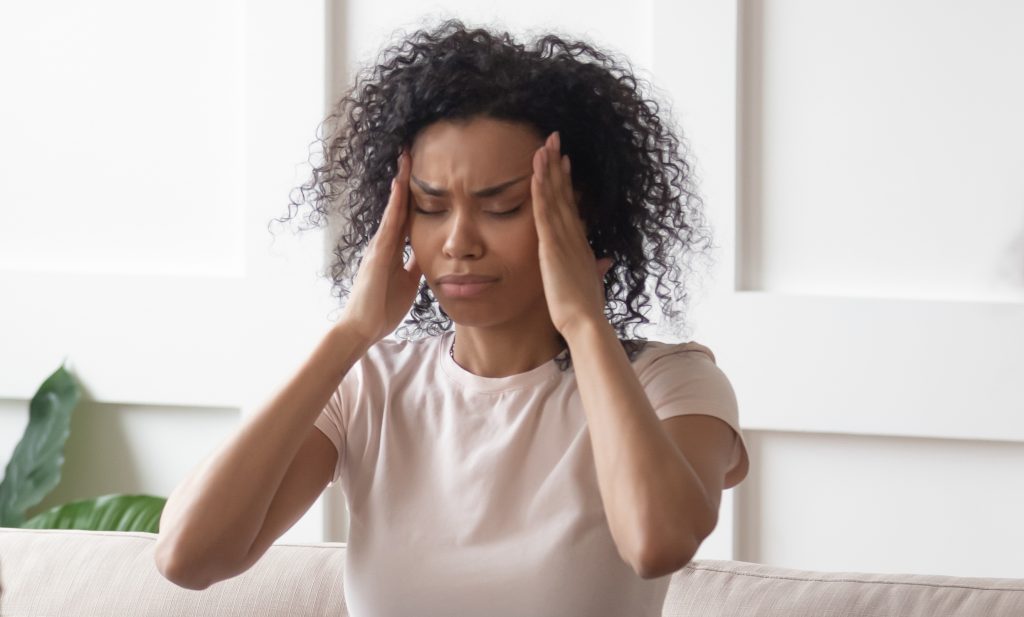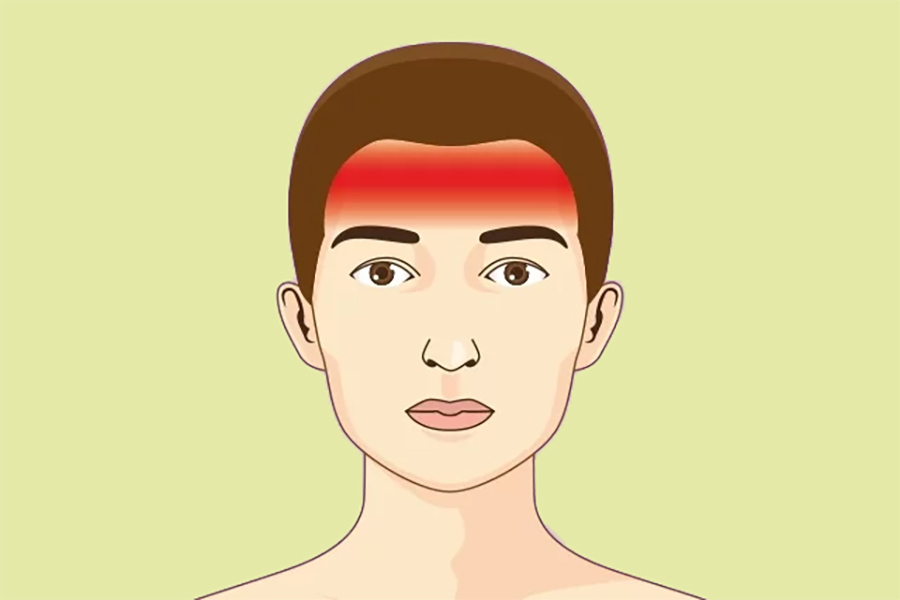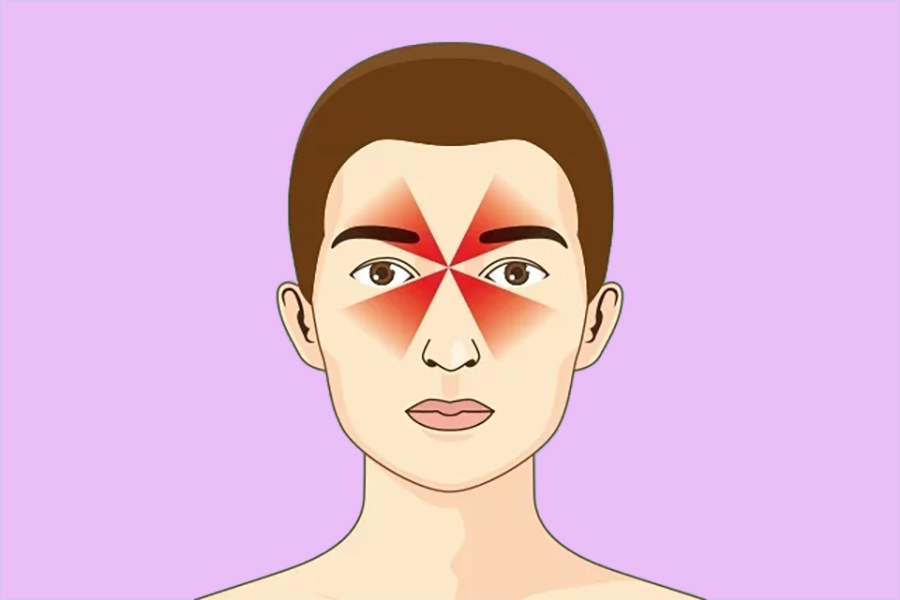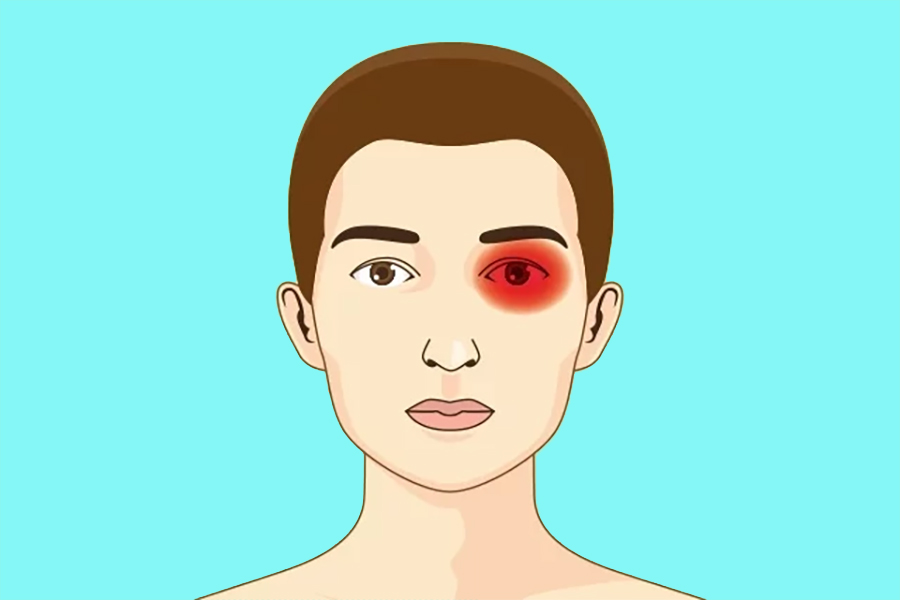Headache has many types: differentiate the common headache from migraine

Summary
– Headache, also called headache, is all the discomfort felt in the region of the skull
– Among the various types that exist, the most common is migraine, which is usually inherited
– The greatest risk of neglecting the inconvenience is that it leads to the excessive use of painkillers and the aggravation of pain, which can become daily
– To avoid crises, care is for life
Family conflicts, lack of time for leisure and self-care, problems at work. With so much to manage in your day to day life, you can be one more in the statistics of people who live having headaches triggered by stress. Considered one of the most common complaints in doctor’s offices, losing only to lower back pain, headache, also known as headache, has a prevalence of 96%, especially among women. This means that practically everyone can have this symptom throughout their life. One of its types, migraine, affects as much as 10% of the world’s population.
Although it has a negative impact on people’s lives, headache is considered under-diagnosed and under-treated. One of the possible causes of this condition is the trivialization of the symptom of headache. Because it seems so normal, people end up self-medicating without thinking about seeking specialized help. But it shouldn’t be like that.
How does it manifest itself?
Headache is all the discomfort located in the cranial region, that is, in the forehead, temples, and even in the back of the skull. Any painful sensation in that part of your body is considered headache.
It is important to point out that headache is not a disease, but a symptom that needs to be investigated if it is repeated frequently.
Why does this happen?
The origin of headache has various causes that can be a warning sign of a disorder in any part of the body, including the brain. Potentially curable, once treated, the sensation disappears. The headache can be a consequence of:
– flu;
– Meningitis;
– Sinusitis;
– Cranial Trauma;
– Tumors;
– Problems in the cervical region;
– Brain and meningeal bleeding, among others.
The headache can also result from some problem related to the central nervous system (CNS). The most common is migraine. Incapacitating, it is considered an inherited dysfunction, since it affects genetically predisposed brains. In that case, headache will be just one of the symptoms of the disease.
Learn to differentiate between common headache and migraine
Common headache: among experts, it is also defined as tension-type. Generally, common headache has light to moderate intensity and covers the whole head, giving it a feeling of weight or pressure. In this hypothesis, the discomfort passes with the use of analgesic or brief rest.
Migraine: the pain has its own characteristics and is always accompanied by other signs, such as those below.
– The intensity is medium to strong;
– The pain affects one side of the head, especially the forehead and temples, but may migrate to the other side or be bilateral;
– The painful sensation manifests as a pulsation. It is as if a heart beats in the head;
– There is greater sensitivity to light, sounds, smells (perfume, smell of food, smoke, etc.);
– There may be loss of appetite, motion sickness or vomiting;
– Difficulty of digestion is perceived;
– You feel dizziness, dizziness or a feeling of imbalance;
– You notice anxiety, irritation, tiredness and drowsiness similar to what you experience when you have the flu;
– The compulsion for sweets is remarkable;
– There is a drop in concentration and performance at work, among other signs.
As migraines are divided into two types (with aura and without aura), in addition to all these elements, neurological symptoms such as visual distortions will be present, that is, the individual sees bright points, has loss of visual field: half of it, only peripheral or even total loss of vision for a few moments.
The triggers of migraine
Another particularity of migraine is the identification of triggers, i.e. circumstances that can “start” the pain. The most frequent are:
- Tiredness;
- Stress;
- Sleep deprivation;
- Prolonged fasting;
- Female hormonal cycles;
- Climatic variations (extreme weather -heat or cold, as well as air-conditioned environment);
- Alcohol consumption.
Different types of headaches, symptoms and their causes
There are different types of headaches that can occur for different causes and in different regions of the head. Some types of headaches can also be accompanied by other symptoms, depending on the cause.
Treatment depends on the type of headache and usually consists of the administration of analgesic and anti-inflammatory drugs or medicines that solve the cause of headache, such as sinusitis.
1. Tension headache

This is a type of headache caused by stiffness in the muscles of the neck, back or scalp, which can be caused by poor posture, stress, anxiety or bad position during sleep.
The most common symptoms of tension headache are mild to moderate pressure pain, as if you had a helmet on your head, which affects both sides of the neck or forehead and excessive sensitivity in the shoulders, neck and scalp and to light and noise. The tension headache does not cause nausea or worsen with physical activity.
How is it treated?
To relieve tension headache, one should try to relax by giving a scalp massage, taking a hot bath or doing some activity. If this does not work, it may be necessary to take analgesic medication recommended by your doctor.
2. Migraine

Migraine is characterized by an intense and pulsating headache, which can be accompanied by nausea, vomiting, dizziness and sensitivity to sunlight.
This type of headache can have a moderate to severe intensity and can last from a few minutes to hours, and in some cases can last for 72 hours. It usually falls more on one side of the head and the symptoms can be disabling or aggravated, may impair vision and cause sensitivity to certain smells and difficulty concentrating.
How is it treated?
The most commonly used medicines to treat migraine headaches are painkillers and anti-inflammatories, such as paracetamol or aspirin, which help to relieve pain in some people and medicines that cause constriction of blood vessels and block pain. Always consult a doctor!
For people who feel sick and vomit, they may take antiemetics.
3. Headache associated with sinusitis

Sinusitis is characterized by an inflammation of the sinuses, which most often causes headache or facial pain, which worsens when the head is lowered or the person lies down.
Besides the headache caused by sinusitis, other symptoms can manifest themselves, such as pain around the nose and around the eyes, nasal discharge and congestion, cough, fever and bad breath.
How is it treated?
To treat sinusitis and relieve headache, antihistamine drugs, decongestants and analgesics are used. If an infection develops, it may be necessary to take antibiotics. Always consult a doctor for more information.
4. Headache in sage

headache in sage is a rare disease, which is characterised by a very strong and stabbing headache, stronger than migraine, which hits only one side of the face and the eye, and most often appears during sleep, interrupting it most of the time. The pain can be very intense and recur several times throughout the day.
Other symptoms that can arise during a fit are runny nose, swelling of the eyelid and redness and tearing of the eye on the same side of the pain.
How is it treated?
Generally the disease has no cure and the treatments are not very effective, nor do they solve the seizures, only attenuate them or decrease their duration. The most commonly used medicines are non-steroidal anti-inflammatory drugs and strong analgesics such as opioids and 100% oxygen mask at times of crisis. Besides these types of headache, it can also arise from causes such as hormonal changes, hypertension or head injuries. Consult with your doctor for proper treatment.
When to seek medical help?
If you have three days of headache within a month, occasions when the use of analgesic was necessary, seek a neurologist immediately. The count can be like this: the pain manifested for three days in a row, or one day every week. If, during a quarter, you count 15 days or more of headaches during the 30-day break, and this is repeated within a year, it already means that the headache is chronic.
In fact, it takes people on average eight years to consult a specialist. This is because when the symptom bothers, it is never taken seriously and people always find a justification: it is PMS, a strong odor in a certain environment, prolonged fasting. Thus, many people use self-medication as an alternative to get rid of pain. Never do that! Always seek the help of a doctor.
The problem is that the continuous and repeated use of analgesic medications is one of the main factors that aggravates or worsens migraines, and ends up making them become daily.
How the diagnosis is made
The doctor should make a detailed survey of your history. Through a conversation he will try to identify the characteristics of the pain: frequency, duration, intensity, location, besides the situations in which it manifests, worsens or improves.
Be ready to answer him if someone in his family has similar symptoms, such as his eating routine, his lifestyle and working conditions, as well as how he copes with day-to-day stress. After this conversation, comes the physical examination. Some doctors may observe the veins of the head and neck, the jaw joint, the shoulders, and the cervical region.
If you suspect that your headache is due to a migraine, know that there is no test to make a diagnosis. In fact, tests such as MRI, encephalogram and tomography often give normal results.
Migraine is a disease of brain function, unlike anatomical or structural diseases – such as the aneurysm and tumour – which have a very rapid (acute) evolution and lead to a rapid action in search of a solution. Not in migraine.
What to expect from treatment
He’ll depend on the cause of the headache. As the most common situation is a migraine, the therapeutic objective is to reduce the attacks.
When the pain is at its peak, there are several specific medications for its relief, as well as prophylactic options, i.e. they prevent another episode and are of daily use. And even botulinum toxin can bring relief.
In addition to these drugs, there are a range of non-drug strategies that include physiotherapy, acupuncture, nutrition and cognitive behavioral therapy. In the case of migraine, it is necessary to bear in mind that care will be forever and that, for consistent control, the waiting time can be from one to two years.
The role of diet
A certain food may be a trigger, but this happens to the minority and some experts say it is a myth that migraine has a food cause. What is observed in clinical practice is that it is the routine of some patients that is harmful, with common reports of prolonged fasting and inadequate hydration, typical situations that trigger a crisis.
Main foods, nutrients and substances related to discomfort
– Caffeine: present in coffee, tea mate, white tea, green tea, black tea etc., soft drinks and cola based drinks, the substance can be completely removed from the diet and even be subject to a drug detoxification. For some people the withdrawal is gradual and the consumption of decaffeinated coffee is allowed.
– Aspartame-based sweetener: found in ready-to-drink drinks, soft drinks and zero-type yogurts. Always read the list of ingredients of the product to identify if there is the sweetener. Consumption is not prohibited, but should be limited.
– Inlaid foods: ham, turkey breast, sausage, among others, are rich in nitrite, an oxidizer of the nervous system and can trigger pain.
– Alcoholic drink: those with migraines are always less tolerant to their consumption.
Nutritional counselling may also include the consumption of vitamins and minerals that have been linked to reducing crises, especially among women. Magnesium, vitamins B2, B6 and B12, coenzyme Q10 and omega 3, indicated in therapeutic doses, have been allies in the treatment and in the long run may even help reduce the consumption of medication.
If you want to include in the diet favorable foods, capriche in the intake of dark green vegetables, oilseeds, dairy products, meat, fish and fruit. It is important to clarify that such items should not be used as if they were medicines. They guarantee a good food routine, that is, they help to build a healthy habit that leads to the reduction of crises.
Prevention tips or to collaborate with treatment
Some triggers are not modifiable, such as climate change and the smells around you, but you can put into practice the precautions below to reduce crises:
– Avoid self-medicating;
– See a neurologist if the pain is acute or frequent;
– Be patient and collaborative during treatment. A considerable improvement, with reduction of migraine attacks can take from one to two years;
– Practice physical activity regularly;
– Invest in self-knowledge to be able to identify what triggers the pain for you;
– Try to eat every three hours. Prolonged fasting is a trigger for pain;
– Maintain a sleep routine and try to sleep at least seven hours a night;
– Avoid stress or take steps to minimize it;
– Avoid smoking, alcohol, and other drugs;
– Ensure good daily hydration – drink two to three liters of water a day, every day;
– Adopt the habit of writing down what you have eaten to identify the food you consumed in the hours before a crisis.
– Keep a healthy weight. Extremes in the balance are risk factors for the chronification of headache.
How to relieve headache in pregnancy?

Headache in pregnancy is most common during the 1st trimester of pregnancy, and can occur due to various causes such as hormonal changes, tiredness, nasal congestion, low blood sugar levels, stress or hunger. Generally, headache in pregnancy tends to decrease or disappear because the hormones tend to stabilize.
However, headache in pregnancy can also be caused by more serious conditions, especially increased blood pressure, which, if constant and accompanied by stomach pain and blurred vision, can be a sign of pre-eclampsia. In this case, the pregnant woman should go immediately to the obstetrician to confirm the cause and start appropriate management, as pre-eclampsia can seriously impair pregnancy if not correctly assessed and treated.
Remedies to relieve headache
The use of medicines during pregnancy should only be done under the indication of the obstetrician, since some medicines can be harmful for the pregnant woman or the baby.
Normally, the obstetrician only indicates the use of some medication when the headache is very intense, does not pass with natural measures or is accompanied by other symptoms such as nausea and vomiting, for example, being indicated, in most cases, the use of paracetamol.
How to relieve headache naturally
Before starting to use any medicine to relieve the headache, the pregnant woman should opt for natural options such as
– Resting in a quiet, well-ventilated environment, without noise and with the lights off;
– Apply a compress of cold water to the forehead or neck;
– Apply a compress of warm water around the eyes and nose, in case of headache from nasal congestion;
– Make a small massage on the forehead, the base of the nose and the nape of the neck, using the fingertips;
– Make a scald-foot with marbles, dipping the feet and moving them over the marbles to relax and relieve the pain;
– Make light meals every 3 hours and in small amounts;
– Take a bath in warm or cold water or wash your face with cold water.
Acupuncture is also a great natural solution to relieve constant headaches during pregnancy.
When to go to the doctor
Although it is very common for a pregnant woman to experience headache during pregnancy due to hormonal changes, it is important to inform the obstetrician about these symptoms, especially when headache is frequent, or accompanied by other symptoms such as stomach pain, nausea and vomiting, fever, convulsions, fainting, or blurred vision, as these can be signs and symptoms of some health problem that can impair pregnancy.

tags: #howtostopaheadache #howtogetridofaheadache #howtoreduceheadache #howtorelieveheadache #howtotreatheadache


